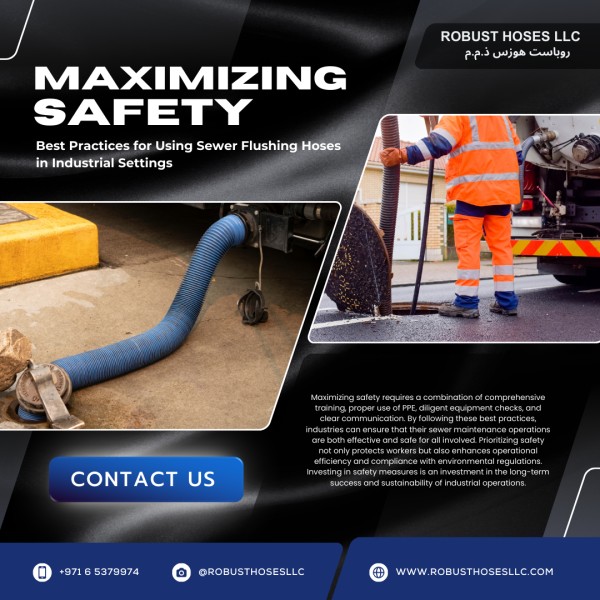
Before operating sewer flushing hoses, all personnel should receive thorough training on their use. Training programs should cover equipment handling, safety procedures, and emergency response. Certification ensures that operators are proficient and aware of potential hazards, reducing the risk of accidents.
Proper PPE is crucial when using sewer flushing hoses in Dubai, Abu Dhabi, Sharjah, Ajman, Umm Al Quwain, Ras Al Khaimah, Al Ain, Fujairah and UAE. Operators should wear high-quality gloves, safety goggles, hard hats, waterproof suits, and steel-toed boots to protect against high-pressure water, chemical exposure, and physical injuries. Ensuring that PPE is correctly fitted and in good condition is also vital for effective protection.
Before each use, conduct a thorough inspection of the sewer flushing hose and related equipment. Check for signs of wear, such as cracks, leaks, or weak spots in the hose. Ensure that all connections are secure and that the pressure settings are appropriate for the task at hand. Regular maintenance and pre-operational checks can prevent equipment failure and accidents.
Effective communication among team members is essential during sewer flushing operations. Use hand signals, radios, or other communication devices to coordinate actions, especially in noisy environments. Clearly defining roles and maintaining constant communication helps prevent misunderstandings and accidents.
Ensure that the work area is well-organized and free from unnecessary obstructions. Mark off the operational zone with safety cones or barriers to keep unauthorized personnel at a safe distance. Adequate lighting is also important for visibility, especially in confined or poorly lit spaces.
Managing water pressure is critical. Excessive pressure can cause hose bursts or damage to the sewer system, while insufficient pressure may be ineffective. Operators should be trained to adjust pressure settings according to the specific requirements of the task and monitor pressure gauges continuously during operation.
Develop and implement an emergency response plan that includes procedures for hose bursts, operator injuries, and other potential incidents. Ensure that all personnel are familiar with emergency protocols and that first aid kits and emergency contact numbers are readily accessible. Regular drills can help reinforce preparedness and response times.
Avoid kinking or over-stretching the hose, as this can weaken its structure and lead to failure. Use appropriate reel systems to manage hose deployment and retrieval smoothly. Always lay out the hose in a manner that prevents tangling and allows for easy maneuverability.
Implement a routine maintenance schedule to check and service sewer flushing hoses and related equipment. Replace worn-out hoses and parts promptly to maintain operational safety and efficiency. Staying up-to-date with the latest equipment advancements can also enhance safety and performance.
Maximizing safety requires a combination of comprehensive training, proper use of PPE, diligent equipment checks, and clear communication. By following these best practices, industries can ensure that their sewer maintenance operations are both effective and safe for all involved. Prioritizing safety not only protects workers but also enhances operational efficiency and compliance with environmental regulations. Investing in safety measures is an investment in the long-term success and sustainability of industrial operations.
Fill in the form and we will contact you as soon as possible.